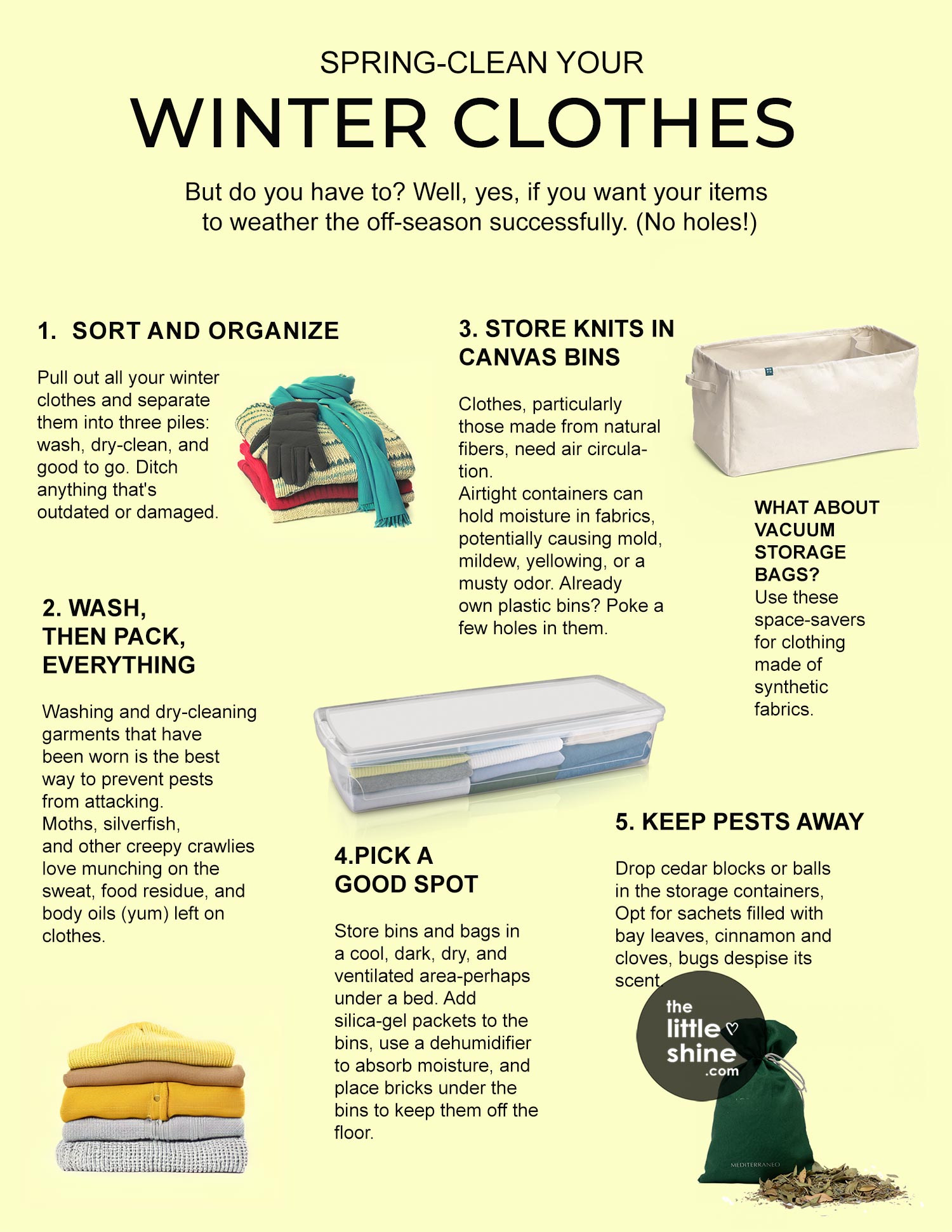When it is that time of the year again, the winter is done and we’re entering into spring, well, that’s when we all begin to slowly retire our winter clothes.
From heavy coats and warm sweaters, gloves and thermals, it’s finally time to pack it all away into a storage unit.

But what’s essential is how you clean and store your winter clothes. From sorting and organizing them, to washing them and finally putting them away, there’s a lot to do in between. So, let’s get down to the details!
How to Spring Clean Your Winter Clothes The Right Way
Step 1: Sort out and organize your winter clothes
Sorting out and organizing your winter clothes before you go into any further step is very essential. So, here’s what you got to do. Start off by separating your winter clothes into 3 lots – those that need to be washed, those that need to be dry-cleaned and those which are ready to pack. Make sure to include cloves, scarves, hats, mittens etc.
While you’re sorting out your winter clothes, give away for charity clothes that you wish to retire for good and discard torn and old outdated clothes which aren’t usable anymore.
Lastly, since you’ve emptied your shelves, dust, clean vacuum your cupboard, before putting in the next set of clothes to be worn.
Step 2: Wash first, before you pack them
Washing or dry-cleaning your clothes before you pack them is the best way to go about it, so that when you take them out the following winter, it is ready to wear. Washing or dry-cleaning your winter clothes before packing them is a good way to keep pests away as silverfish, moths and such other creepy crawly creatures, often feed on sweat, body oils, food residue etc.
Also, washing or dry-cleaning your winter clothes can get rid of dirt and stains, which can harden over time and show up even more prominent when you take out your clothes the next time.
Step 3: Store knitwear in canvas bins
Those winter clothes made from natural fibres need air circulation when stored and should be stored in canvas bins.
Airtight boxes can retain moisture in fabrics and can cause musty odours, mold and mildew formation. Therefore, it is best to use canvas bins.
In case you already have airtight boxes and do not want to buy new ones, then you can simply poke holes in the existing boxes so as to air out your natural fibre winter clothes.
Or else you could also stack your winter clothes in old bedsheets or pillow covers, to keep dust away. Stack them up from the heaviest (at the bottom) to the lightest (at the top).
Step 4: Hang up tailored pieces of clothing
For clothes that are tailored, like coats, leather and silkware, dresses etc, you can place them in breathable bags and then on wooden hangers. You can also wrap them in cotton sheets and place them on racks. You could also fold the items and place layers of tissue between the fold and place them in canvas bins.
For synthetic fabrics, polyester clothes etc., you can use vacuum storage bags in order to save space.
Note: Make sure never to store any items in dry-cleaning bags, as they can trap moisture and chemicals within, making the clothes stain yellow.
Step 5: Choose a storage area
Keep your packed winter clothes (even if they are in storage bins), in a cool and dry place, which is relatively dark and ventilated. You could store it under a bed, in a guest room etc. In case you are storing them in the basement, then, add in small silica-gel sachets into the bins, in order to absorb any moisture.
Avoid placing he storage bins in the attic, as high temperatures can cause the fabric to get damaged and brittle.
Note: Do not place the storage bins directly on the floor, keep them on bricks or on a table (making sure they are elevated).
Step 6: Keep insects and pests away
Place cedar sachets, balls or blocks into your storage containers and if you’ve used hangers, slip in cedar rings (making sure they do not touch the fabric to avoid staining), in order to keep pests and insects at bay. Using ingredients link star anise, bay leaves, cinnamon, cloves and lavender, these sachets help keep out moths, silverfish and other pests while keeping your drawers smelling fresh.